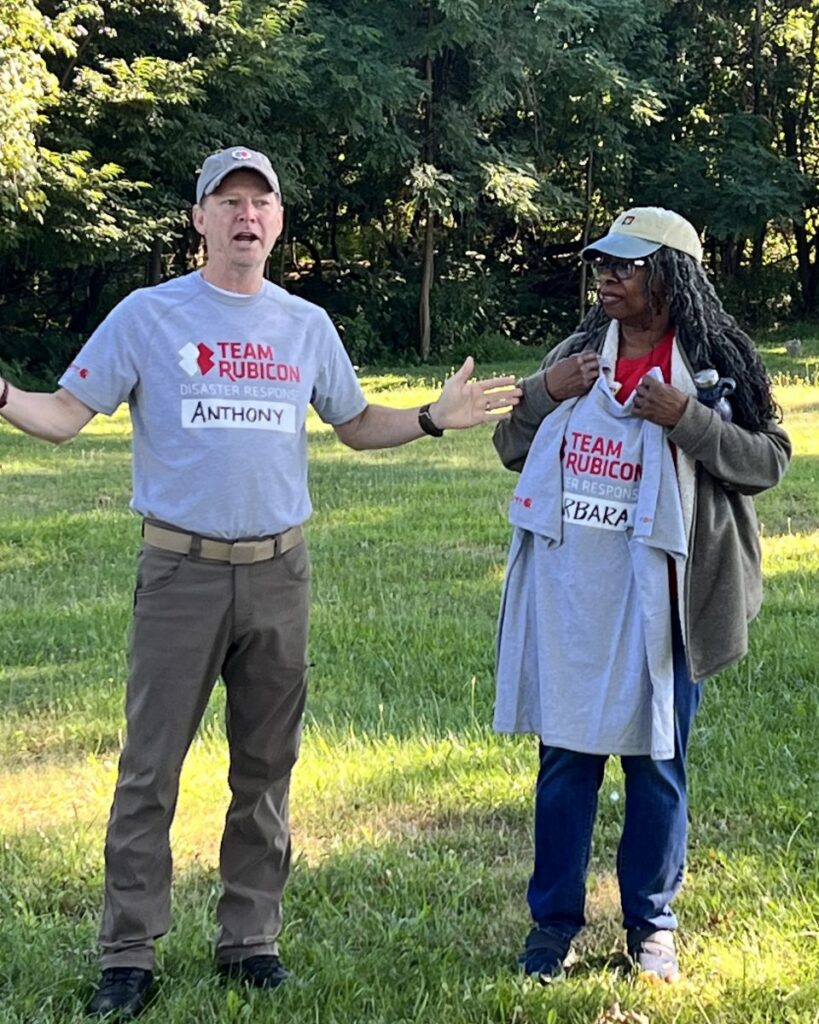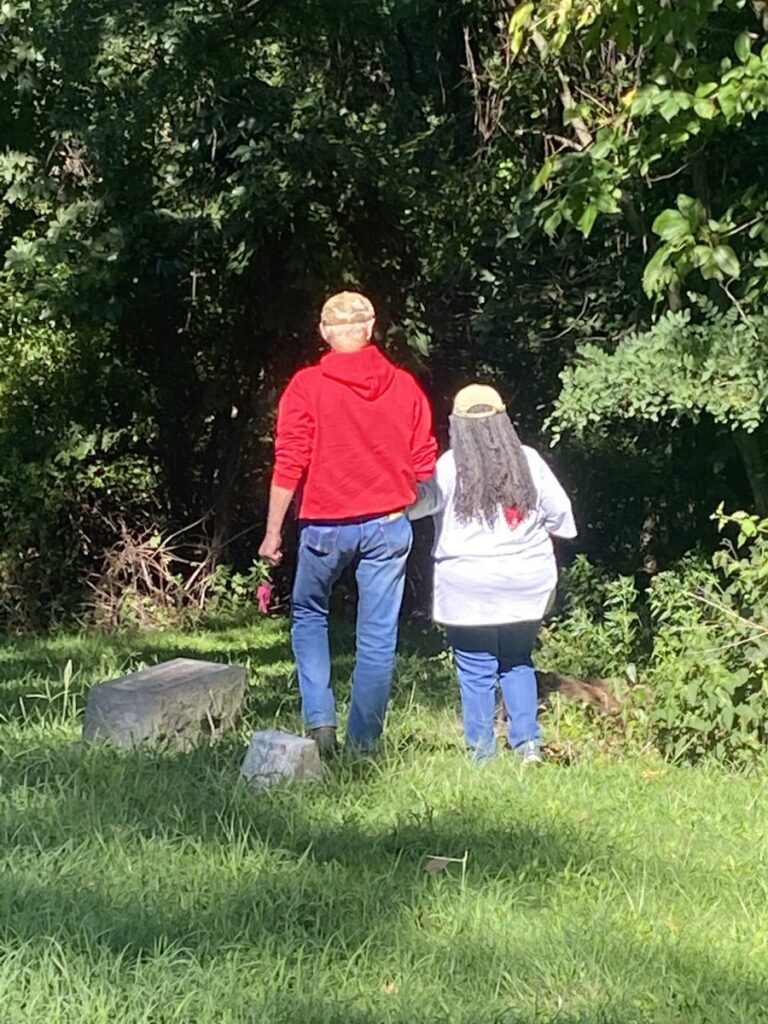When Barbara Barksdale first began cleaning up the tiny corner of the cemetery that holds her grandfather, she discovered that the story of Steelton’s African American community—her community—had literally been buried.
The Historic Midland Cemetery sits just outside of the small town of Steelton, PA. Its first graves were laid around 1795 and were nearly exclusively occupied by farmhands and laborers. As the region expanded, the cemetery grew along with it, stone headstones documenting the lives and telling the stories of the people who lived there. But some of those stories had been lost through time and neglect. The woods choked off portions of the cemetery, and many graves—primarily those belonging to non-white decedents—were allowed to become overgrown.
But Midland Cemetery is far larger, and contains far more stories, than anyone in Steelton had realized.
“I’m glad I didn’t understand how big it really is,” says Barksdale, who has been reclaiming those stories for more than 30 years. “Otherwise, I might have been intimidated.”
Today, many around Steelton call Barksdale “the Cemetery Lady.” She began her mission to clean up the cemetery and unearth those stories 30 years ago. Her passion for history was ignited by the knowledge that so much of it lay unread beneath the soil of the graveyard. “I couldn’t just walk away from these stories,” the Cemetery Lady says.

The cemetery wasn’t always called Midland: originally, it was known as the Colored Cemetery. Interred in Midland Cemetery are the remains of Pennsylvania African Americans cut from the history books. Slaves who fled north for freedom and the freedmen who settled in Pennsylvania are in Midland, along with clues to their roles in Steelton’s story. “It’s a challenge because many of them only have a first name or the name their slave master gave them,” explains Barksdale, “so their stories are hard to find sometimes.”
The souls at rest in Midland Cemetery detail a broader story than that of just Steelton. The abandoned graves speak to American history at large, and even to the history of the industrializing world of the 19th and 20th centuries. Several of Steelton’s prominent African American community leaders are buried there, such as the first Black city councilman, along with Black ministers like Robert Fields, former slave and the founder of Steelton’s century-old Monumental AME Church.
Everyone from doctors to steelworkers who worked in the community lay in Midland, and so does national baseball legend Herbert “Rap” Dixon. Dixon made history in Yankee Stadium in New York City during a Negro League game in 1930, the first time Black players were allowed in the stadium. During that game, Dixon became the first African American player to hit a home run at Yankee Stadium. In fact, he hit two more homers that day—17 years before Jackie Robinson broke the color barrier in American sports.
Beyond America’s borders, Steelton’s Black residents played an equally substantial role in world history. Home to America’s first steel company, Pennsylvania Steel, Steelton helped usher in the Second Industrial Revolution. “Steelton mills provided steel to the whole world, from the Golden Gate Bridge to Italian railways,” says Barksdale, “and the millworkers buried here are part of that story.”
As Barksdale has continued to unearth and share those stories, a group of Team Rubicon Greyshirts has, for the last few years, assisted her in her mission. For the Greyshirts, the local community service project is part of helping the community defend its future—by uncovering its past. “We’re a part of the community,” says Greyshirt Tony Aldinger.

Greyshirts have been eager to return to help, especially given the huge numbers of military veterans buried and forgotten at Midland. Among the dozens of cracked, toppled, buried, overgrown, and faded headstones of Midland Cemetery are those of military members whose service stretches back more than 150 years.
“We’re finding them, one soul at a time,” says Aldinger, “and now it’s personal.”
Among those veterans buried here are United States Colored Troops, the Black men who volunteered to serve during the Civil War. Washington Jordan was one such soldier, at first anonymously so: his handmade tombstone showed only his name and date of death. Barksdale’s research revealed his military service and that he liked attending Decoration Day, the original name for Memorial Day.
Here too are Buffalo Soldiers, the Black Cavalry made famous in film and song. Buffalo Soldiers fought in and helped open the Western frontier, defending settlers and railroad crews and protecting the nation’s infrastructure, like the nascent telegraph system. Many Buffalo Soldiers went on to become the first rangers in what would become the National Park Service, even as they suffered the discrimination so characteristic of that America.
Black soldiers from every war, from the Spanish-American to both World Wars to the Korean War, are also buried, but only now recognized, in Midland. Uncovering these graves and stories is deeply meaningful for an organization of veteran-led volunteers. “The history goes unrecognized,” says Aldinger, “I get to be a part of recognizing it and their service to our country.”
Barksdale is looking forward to continuing her work, which will be a little easier now. “Because of the help of the Greyshirts, we are now getting onto the National Register of Historic Places,” she says.
“We don’t want to miss any other veterans.”




